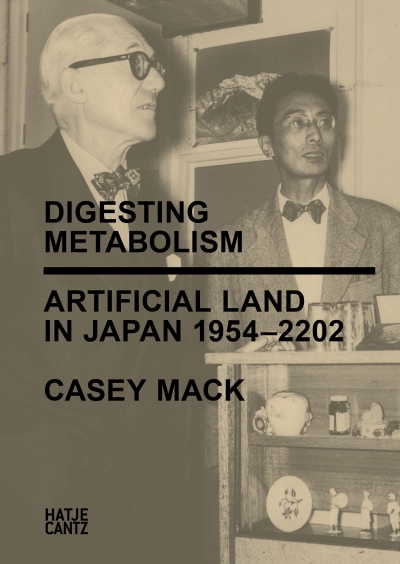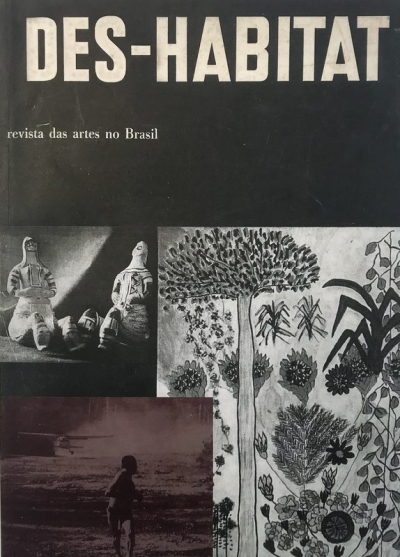Edgar Cabanas, Eva Illouz
Manufacturing Happy Citizens: How the Science and Industry…
C. Profanter, H. Andersen, J. Eckhardt…
The Middle Matter. Sound as Interstice
I. Galuzin, G. Severianova (Eds.)
The Withdrawal of the Red Army
IDEA #381
Transboundary Design. Perspective of Yoshihisa Tanaka
Andres Lepik, Daniel Talesnik (Hg)
Access for All. São Paulo's Architectural…
Isabelle Graw, Christoph Menke (eds.)
The Value of Critique: Exploring the Interrelations of…
Bernhard Denkinger
Die vergessenen Alternativen. Strukturalismus und…
P. Bogner, G. Zillner
Frederick Kiesler: Face to Face with the Avant-Garde:…
Jonathan Hill
The Architecture of Ruins: Designs on the Past, Present and…
L. Giusti, N. Ricciardi (Eds.)
Museums at the Post-Digital Turn
IDEA Magazine
IDEA 386. Ministry of Graphic Design Fikra Graphic Design…
Gregor H. Lersch, Léontine Meijer-van…
Mischa Kuball. res.o.nant
Marco Revelli
The New Populism: Democracy Stares into the Abyss
Jacques Ranciere
Aisthesis: Scenes from the Aesthetic Regime of Art
Gean Moreno
In the Mind but Not from There. Real Abstraction and…
Saskia de Wit
Hidden Landscapes. The metropolitan garden as a multi-…
Tchoban Foundation
Deutsche Filmarchitektur 1918–1933 – German Film…
Natascha Süder Happelmann
Ankersentrum (surviving in the ruinous ruin)
HeK (House of Elecronics Basel)
Entangled Realities: Living with Artificial Intelligence /…
Alain Ehrenberg
Die Mechanik der Leidenschaften: Gehirn, Verhalten,…
Rosi Braidotti
Posthuman Knowledge
Klaus-Martin Bresgott
Neue Sakrale Räume: 100 Kirchen der Klassischen Moderne
Jochen Volz, Gabi Ngcobo (Eds.)
We Are Many. Art, the Political and Multiple Truths
Fitz, Krasny, Architekturzentrum Wien (…
Critical Care. Architecture and Urbanism for a Broken Planet
Anne Kockelkorn, Nina Zschocke (Hg)
Productive Universals. Specific Situations: Clinical…
Elke Neumann
Palast der Republik. Utopie, Inspiration, Politikum
A+U 441
Metal Skins
Troy Schaum (Ed.)
Totalization: Speculative Practice in Architectural…
F. Serapiao, G. Wisnik
Infinite Span. 90 Years of Brazilian Architecture
Heike Munder (Ed.)
Producing Futures: A Book on Post-Cyber-Feminisms
L. Giusti, N. Ricciardi (Eds.)
Museums at the Post-Digital Turn
Victor Papanek
Design for the Real World
Andreas, Jung, Schmal (Hg.)
Wohnen für Alle: Bautenkatalog
Elizabeth Resnick
The Social Design Reader
Anca Benera, Arnold Estefan
DEBRISPHERE - Landscape as an Extension of the Military…
Fiona McGovern, Megan Francis Sullivan…
Jill Johnston. The Disintegration of a Critic
Byung-Chul Han
Vom Verschwinden der Rituale: Eine Topologie der Gegenwart
Camiel van Winkel
Archive Species: Bodies, Habits, Practices
Ted Hyunhak Yoon
Decoding Dictatorial Statues
Sophie Cure, Aurelien Farina
Graphic Design Play Book: An Exploration of Visual Thinking
Danielle Child
Working Aesthetics: Labour, Art and Capitalism
Katya Garcia-Anton
Sovereign Words. Indigenous Art, Curation and Criticism
Monika Rinck
Champagner für die Pferde
Lorraine Daston
Against Nature
Brigitta Gerber, Ulrich Kriese (Hg)
Boden behalten - Stadt gestalten
Civic City Cahier 4
Afterlives of Neoliberalism
Camila Marambio, Cecilia Vicuña
Slow Down Fast, A Toda Raja
Dominik Landwehr (Hg.)
Virtual Reality: Edition Digital Culture 6
Thor Magnusson
Sonic Writing: Technologies of Material, Symbolic, and…
Biechteler, Käferstein, Hochschule…
Architekturpädagogiken: Ein Glossar
Haenschel, Nelke, Planitzer (Hg.)
Uncanny Interfaces
Jens Balzer
Pop und Populismus: Über Verantwortung in der Musik
Lisa Baker
Tiny Interiors: Compact Living Spaces
Marvin Heiferman
Seeing Science: How Photography Reveals the Universe
Kristen Alvanson
XYZT
Zdenke Badovinac
Comradeship: Curating, Art, and Politics in Post-Socialist…
Juan Serra Lluch
Color for Architects
2G 78
Junya Ishigami
OASE 102
Schools & Teachers
Geert Lovink
Sad by Design: On Platform Nihilism
Paul Mason
Klare, lichte Zukunft: Eine radikale Verteidigung des…
M. F. Gage (Ed.)
Aesthetics Equals Politics: New Discourses Across Art,…
Ben Green
The Smart Enough City: Putting Technology in Its Place to…
Make_Shift (Hg.)
Make City. Stadt anders machen. A Compendium of Urban…
Lizzie O'Shea
Future Histories: What Ada Lovelace, Tom Paine, and the…
Alex Bykov, Ievgeniia Gubkina
Soviet Modernism. Brutalism. Post-Modernism
Yuk Hui
Recursivity and Contingency
David Bennewith, Sereina Rothenberger (…
Questions? Looking for answers in the middle of somewhere
Eduardo Viveiros de Castro, Deborah…
In welcher Welt leben?: Ein Versuch über die Angst vor dem…
Alina Popa, Florin Flueras
Unsorcery
Goodman, Heys, Ikoniadou (Eds.)
AUDINT. Unsound : Undead
Tabea Nixdorff.
Fehler lesen. Korrektur als Textproduktion
Silvia Federici
Re-enchanting the World: Feminism and the Politics of the…
Daniel McClean
Artist, Authorship & Legacy. A Reader
Christian Bjone
Almost Nothing. 100 Artists Comment on the Work of Mies van…
André Cadere
Geschichte einer Arbeit/ Unordnung herstellen
Kirsten Maar
Entwürfe und Gefüge. William Forsythes choreographische…
James Bridle
New Dark Age: Technology and the End of the Future
David Rothenberg
Nightingales in Berlin: Searching for the Perfect Sound
Sabine von Fischer
Das akustische Argument. Wissenschaft und Hörerfahrung in…
K. Klaus, R. Bittner (Hg.)
Gestaltungsproben: Gespräche zum Bauhausunterricht
Fröhlich, Fröhlich, Borges, Lippok (Hg.)
Plans & Images. An Archive of Projects on Typology in…
Daniel Martin Feige
Zur Dialektik des Social Design (Studienhefte…
Ursula Böckler
Die Photos der "Magical Misery Tour" mit Martin…
Michael Scheer / Gesellschaft für…
Stadtwirte. Von Sozialraumfarmern und Inklusionswirten
re:form e. V. (Hg.)
Re:Eden. Neue Blicke auf die älteste Reformsiedlung…
Alice Maude-Roxby, Stefanie Seibold
Censored Realities / Changing New York
Nathan Jurgenson
The Social Photo: On Photography and Social Media
Randy Deutsch
Superusers: Design Technology Specialists and the Future of…
John Latham
John Latham. The N-U Niddrie Heart
IDEA Magazine
IDEA 385. Focusing on Locality in Design Practices of the…
Anna Harding (Hg.)
Artists in the City. SPACE in '68 and beyond
Damon Krukowski
Ways of Hearing (SFX: Needle Drop)
Sophie Wolfrum, Alban Janson
Die Stadt als Architektur
Heinz Peter Knes
Der weltrevolutionäre Prozess seit Karl Marx und Friedrich…
Paulo Tavares
Des-Habitat (revista das artes no Brasil)
Richard Butsch
Screen Culture: A Global History
Hanne Loreck in Zusammenarbeit mit Jana…
Visualität und Abstraktion. Eine Aktualisierung des Figur-…


































































































